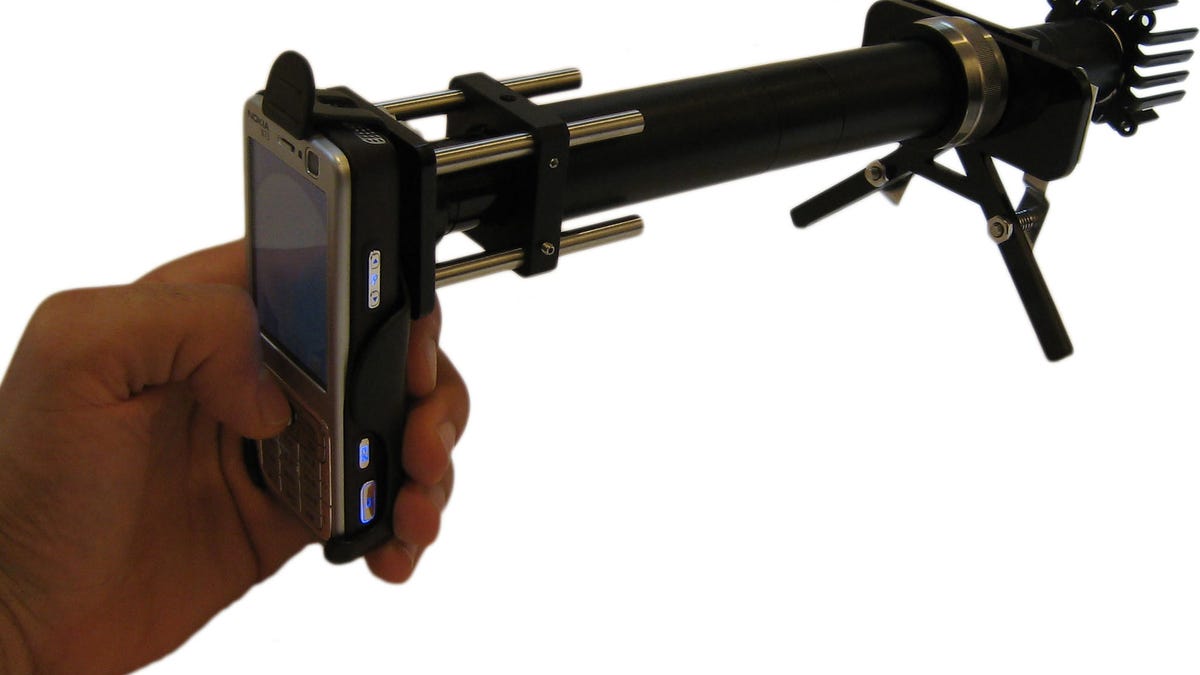Cell phone microscope now works under fluorescent light
CellScope, a microscope camera made by pairing a cell phone and a special lens, is now powerful enough to capture images of bacteria labeled with fluorescent markers.

UC Berkeley researchers announced in April a special lens that turns a normal cell phone camera into a portable microscope powerful enough to offer bright field microscopy. They called it CellScope.
Well, the device just got even more powerful. The group announced Tuesday that the CellScope is now capable of taking color images of malaria parasites and even of tuberculosis bacteria labeled with fluorescent markers.
The version of the Cellscope introduced in April works with handhelds and even Netbooks and can be used for bright field microscopy, which uses simple white light--such as from a bulb or sunlight--to illuminate samples. The new version adds fluorescent microscopy to the repertoire. The device can now take pictures of a target--such as a parasite, bacteria, or cell--tagged with a specific fluorescent wavelength emitted by a special dye.
To achieve this, the researchers used filters to block out background light and convert the light source--a simple LED--into the 460-nanometer wavelength required to excite the green fluorescent dye in the sample. After that they were were able to take fluorescent images of Mycobacterium tuberculosis (which causes TB in humans) with a 3.2-megapixel off-the-shelf phone camera. The images were then automatically analyzed using software to show the total of bacteria in the blood sample.
This new development means the prototype of the CellScope can also be used in field settings for disease screening and diagnoses. This is especially doable since apart from the Cellscope, the other requirements are just filters and LEDs that cost just a few dollar each.
According to bioengineering professor Daniel Fletcher, who headed the development team, traditional equivalent equipment would cost thousands of dollars and is much more bulky. And it just so happens that the same regions of the world that lack access to adequate health facilities are, paradoxically, well-served by mobile phone networks.
However, for now, it's still unclear how much the special lens for the Cellscope would cost and when you can actually get a hold of one.

